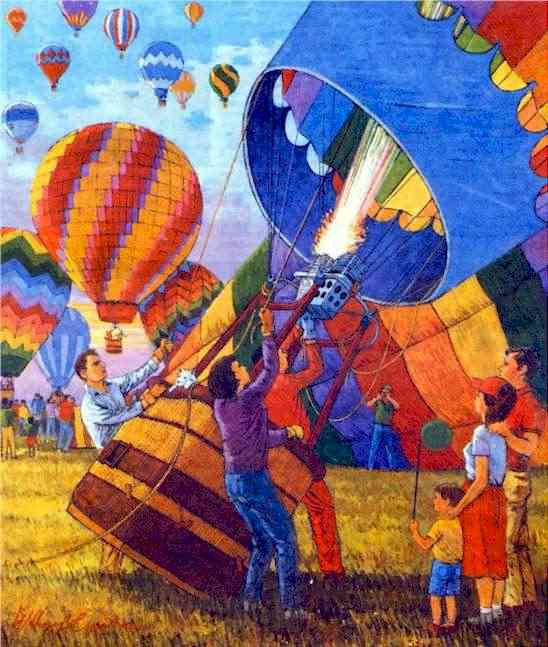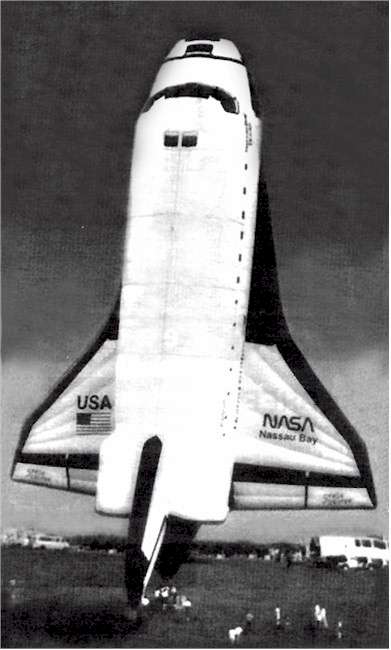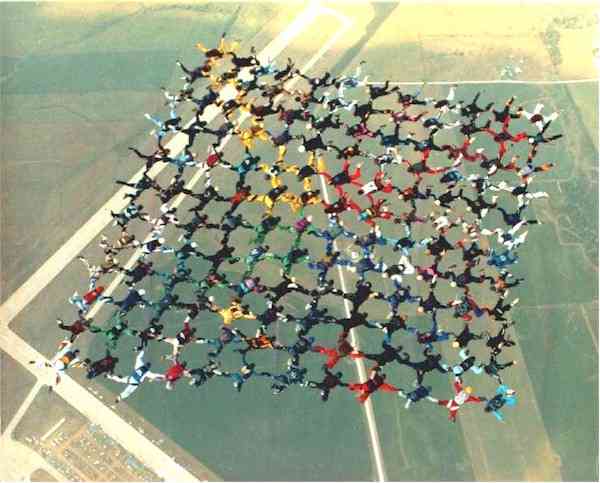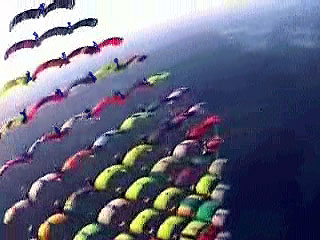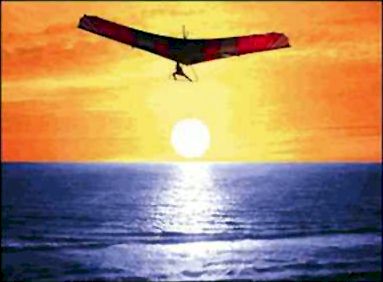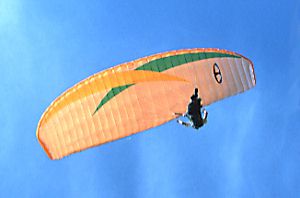Floating on Air
Hot Air BalloonsI have known today a magnificent intoxication. I have learnt how it feels to be a bird. I have flown. Yes, I have flown. I am still astonished at it, still deeply moved. - Le Figaro, 1908
"First Balloon Ride" by William J Coombs, official artist of the Quick Chek New Jersey Festival of Ballooning More than 125 colorful hot-air balloons filled the summer skies at Solberg Airport in Readington as part of the 19th annual Quick Chek New Jersey Festival of Ballooning presented by GPU Energy. The 3-day festival was held 27-29 July 2001. A dazzling assortment of balloons, including special shapes such as the Quick Chek American Eagle, GPU Energy Polar Bear, Energizer Bunny, Ben & Jerry's Ice Cream Cone, the Big Apple, the Pepsi can, the Space Shuttle, the CargoLifter Aircraft and the United Van Lines Truck, took flight. The flight on Sunday featured the Fleet Hare and Hound balloon competition. Balloon rides were offered for a once-in-a-lifetime experience and tethered rides were also available.
Although designed in exact proportion to the NASA Shuttle, the Space Shuttle Visit their website at www.balloonfestival.com. Source: The Star-Ledger Friday 20 July 2001
Click to play In December 1985 I was four months pregnant. I went to my obstetrician expecting to hear the baby's heartbeat for the first time. Instead, I learned the fœtus was no longer alive and I'd need an abortion to clear it away. The procedure was scheduled for the following week. In the meantime, I still looked and felt pregnant. I was extremely depressed - this was my third miscarriage in a row. To cheer me up, my husband suggested we go for a hot air balloon ride. I remember that ride much more vividly than the events surrounding it. We were "anointed" with champagne afterwards which, being the cheapest available, had orange juice in it and left our hair stiff and sticky. It didn't matter. We seriously considered getting a balloon of our own but rejected the idea because we are rather private people and ballooning is an extremely public event. When you land, it is often on private property. You can't generally seek permission beforehand because where you land isn't always within your control. You need to have a chase vehicle following you, which requires the involvement of others. People come from all directions to help when you land, and this necessitates numerous conversations with strangers. We found none of these things appealing. But ballooning! If you haven't tried it, consider doing so. It's magical.
Skydiving TalesI watched him strap on his harness and helmet, climb into the cockpit and, minutes later, a black dot falls off the wing 2,000 feet above our field. At almost the same instant, a white streak behind him flowered out into the delicate wavering muslin of a parachute - a few gossamer yards grasping onto air and suspending below them, with invisible threads, a human life, and man who by stitches, cloth and cord, had made himself a god of the sky for those immortal moments. A day or two later, when I decided that I too must pass through the experience of a parachute jump, life rose to a higher level, to a sort of exhilarated calmness, The thought of crawling out onto the struts and wires hundreds of feet above the earth, and then giving up even that tenuous hold of safety and of substance, left me a feeling of anticipation mixed with dread, of confidence restrained by caution, of courage salted through with fear. How tightly should one hold onto life? How loosely give it rein? What gain was there for such a risk? I would have to pay in money for hurling my body into space. There would be no crowd to watch and applaud my landing. Nor was there any scientific objective to be gained. No, there was deeper reason for wanting to jump, a desire I could not explain. It was that quality that led me into aviation in the first place - it was a love of the air and sky and flying, the lure of adventure, the appreciation of beauty. It lay beyond the descriptive words of man - where immortality is touched through danger, where life meets death on equal plane; where man is more than man, and existence both supreme and valueless at the same instant. - Charles A Lindbergh, contemplating his first parachute jump, The Spirit of St Louis 1953
The world's largest diamond formation - 144 skydivers (Source jacobsco.com) Pilot Praised for Saving Lives of Skydivers as Plane Nose-DivedAn Australian pilot has been praised for staying in control of his plane while 10 skydivers jumped for their lives after a man became tangled in the aircraft's tail. Simon Moline, 31, was killed when his parachute opened too soon and caught on the tail of an aircraft, ripping it from the fuselage and sending the plane into a dive. Pilot Barry Dawson steadied the stricken aircraft until the 10 remaining skydivers could bale out. Then Mr Dawson, who was also wearing an emergency parachute, jumped to safety before the single-engine Cessna Carravan crashed. "I had no control. I just yelled at them to get out. I actually gave a mayday, mayday, mayday," he said, referring to the international distress signal. Survivor Paul Murphy said Mr Dawson's actions had saved lives. "I am not a pilot, but visibility and control of the plane would have been very limited due to the tail missing." Mr Dawson said he was thrown around inside the plane as he tried to reach the door. "I felt a jolt from the rear of the aircraft, at the same time the aircraft started to spin out of control," he said. "I thought about riding it in, just for a split second, but then I thought about my new baby daughter and my girlfriend, I saw them alone if I died and decided not to." Mr Dawson said he was devastated to hear of Mr Moline's death, but could scarcely believe his own survival. Source: Ananova Monday 30th April 2001
I read in other articles that Simon Moline was standing in the doorway, preparing to jump, when the pins in his parachute gave way. The parachute began to inflate which pulled him out of the plane and caused the parachute to drape over the tail section. His weight caused to tail section to give way. Apparently this was a fluke accident that could not have been foreseen. The plane plummeted 14,000 feet into a field in Victoria. The pilot is apparently considered to be quite a hero. Paul Murphy of the Australian Parachute Federation described Mr Dawson's efforts as "a very, very heroic task". -------- Original Message -------- Comments: Re the guy in Australia who retained control of a Cessna Caravan while 10 parachutists got out... Back in about 1968 at Hobsonville in new Zealand a Piper PA32-260 Cherokee Six was being used for parachuting, with jumpers exiting the rear door. The first jumper was on a static line from about 2,500 ft. As he left the aircraft the static line caught and deployed his chute just outside the door, carrying him back into the port tailplane. In sliding along the leading edge, the open chute pulled the port stabilator down about 90º, to almost vertical alongside the fuselage. The aircraft pitched up violently and the jumper fell, deployed his emergency chute and landed safely. The other jumpers, on the instruction of the pilot, bailed out with considerable alacrity. However the pilot found himself too low to jump and unable to release the controls without the aircraft stalling and spinning, which would have been fatal to the pilot. He discovered that, with the centre of gravity having come forward after the jumpers bailed out, he could retain control with the engine throttled fully back and full forward wheel. He therefore performed an almost standard circuit onto the adjacent Whenuapai Airfield and landed the aircraft without further damage. A remarkable piece of flying, probably followed by an equally remarkable laundry bill! I recall the incident well as the a/c belonged to a colleague, Mr Graeme Webber who is well known in NZ aviation circles. Eric
Click to play
Body Found after Hijacker Parachutes from PlaneAmong the many legends that surround the Nepalese Gurkhas of the British Army is the story of a paratroop regiment in the Second World War. The leader of the regiment asked for volunteers for a particularly dangerous drop behind enemy lines. About half the Gurkhas promptly stepped forward. The leader then went through what the volunteers would be asked to do. Halfway into his explanation, a surprised voice piped up from the back: "Oh, you mean we can use parachutes?" Every remaining Gurkha joined the volunteers. - Radio Times, London The body of a man who tried to hijack a Philippine Airlines jet, then jumped out of it at 6,000 feet wearing a homemade parachute, has been found. Soldiers recovered the body of Augusto Lakandula in a heavily forested area after residents reported seeing a man in a parachute landing. He landed so hard that his body was buried in mud, with only his knees and hands protruding, police spokesman Jose Lachica said. The lavender chute, about 10 to 15 yards in diameter, could have saved the man if he had had time to fasten it to his body better, he added. This follows conflicting reports on Thursday when staff at Manila Airport and a Filippino website both said the man had survived the jump. Lakandula, whose body was found in the town of Real, Quezon province, about 40 miles east of Manila, was said to be upset because his wife had run off with a policeman. The improvised parachute was with him but not the bag of money he took from the others aboard the plane, Lachica said. He was identified through his seat number on the plane. Officials believe the hijacker's parachute opened after his leap from the Airbus 330, then failed. "A trained skydiver wouldn't use any improvised parachute similar to the one he used," Aviation Security Group director Marcelo Ele said. "I would say he's an adventurist or a man who's fantasising that he's a skydiver. Using that kind of parachute would be plain and simple suicide." At Davao City, where the flight originated, the man could have boarded the jet with his weapons because of several security problems, aviation authorities said. There was no walk-through metal detector, the X-ray machine was not working, so guards were conducting manual checks, and there was no fence around the airport so the man could have bypassed security entirely, Ele said. About an hour into the 90-minute flight, the distraught man, armed with a grenade and a pistol, ordered the pilot of PAL Flight PR812 to return to Davao City, in the southern Philippines, rather than proceed to Manila. When the pilot said he didn't have enough fuel to fly back to Davao City, Lakandula, who wore a ski mask and swimming goggles, robbed the passengers and jumped out. The plane was depressurised to permit the hijacker to jump with a homemade parachute while it circled 28 miles from Manila at 6,000 feet. A huge gust of wind swept into the plane when the door was opened, a passenger said. It stayed open until the jet landed. "I had to push him because he wanted to jump," a flight attendant said. "I opened the door because he wanted to jump." Passenger Ida Marie Bernasconi, a reporter for Manila's TV Channel 13, said, "Before he left, he collected all the money he could from the passengers." When the jet landed at the Manila airport, all 278 passengers and 13 crew left the plane safely. Source: Ananova Friday 26th May 2000
Hang Gliding
Source: somewhere on the web
When I was twenty-something (and still living in Dallas, Texas) I decided to go hang gliding. I contacted an experienced instructor and set up my first lesson (a tandem glide) for the following Saturday. The instructor called me on Friday night and said the lesson would have to be postponed - delayed for quite a while, actually. It seems he had crashed that day and broken both his wrists. He was elated at how lucky he had been. Lucky? Somehow, I never got around to rescheduling...
ParaglidingIf riding in an airplane is flying, then riding in a boat is swimming. - Anonymous
Q. What is paragliding, what is a paraglider? A. Paragliding is the simplest form of human flight. A paraglider is a non-motorised, foot-launched inflatable wing. It is easy to transport, easy to launch, and easy to land. The paraglider itself is constructed of rip-stop nylon from which the pilot is suspended by sturdy kevlar lines. The pilot is clipped into a harness and oriented in a sitting position for maximum comfort. With a paraglider, you actually fly like a bird, soaring upwards on currents of air. Paragliders routinely stay aloft for 3 hours or more, climb to elevations of 15,000', and go cross-country for vast distances. Q. Is paragliding the same as parasailing or parachuting? A. "No", "No", and "No". Parasailing is what you do at a beach, in a modified parachute tied to a boat, often in Mexico after you’ve had one too many cocktails. You get dragged around the harbor like a sack of potatoes, not like a pilot. (If you want to offend a paragliding pilot, refer to their sport as "parasailing".) Parachutes are designed to be deployed during free-fall from an airplane and to then descend to the ground. By contrast, paragliders launch from gentle hillsides with their gliders already opened for flight; if the glider isn’t flying properly, the launch can be aborted before leaving the ground. Since paragliders do not have to withstand the stresses of free-fall deployment, they are much lighter and aerodynamic and are designed to go up rather than down. Q. How is paragliding different from hang gliding? A. Paragliding has a faster learning curve than hang gliding due to the paraglider’s slower forward speed and more forgiving design. Your launches are not "committed"; if you want to stop your launch, you just stop running and the canopy floats down behind you. By contrast, once you start your launch in a hang glider, which weighs anywhere from 60 to 100 pounds, you are committed. The paraglider folds up into a 30-pound backpack in about five minutes and can be easily transported – people commonly carry their paragliders to the top of peaks in the Cascades, Alps, Andes, and Himalayas. The hang glider, due to its weight and rigid frame, must be transported on a vehicle with a roof rack and requires about 30 minutes to set up and again to take down. Because hang gliders fly faster, they can cover greater distances more easily. But paragliders, which have advanced rapidly over the last few years, can now cover distances almost as great and, due to their tighter turning radius, can often stay aloft in light lift when hang gliders can’t. Q. What can I do with a paraglider? A. Paragliders are designed to soar. The duration record is over 11 hours and the distance record is 300 kilometers. In training you will start out just skimming the ground. As you progress and become more skilled and confident you will probably want to go higher and use the wing for its designed purpose - soaring! Average recreational pilots, utilising thermal and ridge lift, routinely stay aloft for 3 hours or more, soar to altitudes of 15,000' and travel cross-country for great distances. In addition, paragliders can be easily carried and launched off of most mountains. Paragliders have been flown off of almost every major peak in the United States and Europe as well as off of Mt Everest. Q. Is paragliding safe? A. You can make paragliding, like most adventure sports, as safe or dangerous as you want. It is of course crucial that you receive instruction from a certified professional and use safe equipment - professional schools will create as controlled a learning environment as possible. But paragliding is still an outdoor sport and Mother Nature is unpredictable - the primary safety factors are personal judgment and attitude. You must be willing to learn gradually and to think with your head not with your ego. If you don’t, then you can get injured or killed; if you do, then you can paraglide until you’re 90. Q. Is paragliding scary? A. Paragliding is the simplest and most serene way to fulfill humankind’s oldest dream - free flight! The pilot jogs down a gentle slope and glides away from the mountain. There is no free-falling or jumping off of cliffs. The launches and landings are slow and gentle and, once in the air, most people are surprised by how quiet and peaceful the experience is. Even a fear of heights is rarely a factor, as there is no sensation of falling. The solo lesson requires more effort (physical and mental) than the tandem lesson, but it lays the basic groundwork necessary to become your own pilot. If the idea of watching the sunset from a comfortable seat in the air, supported by the buoyant evening air, with perhaps an eagle or hawk joining you off your wing tip, appeals to you, then paragliding is for you. Q. Who can do paragliding? A. Paragliding is about finesse and serenity, not strength and adrenaline. As in rock climbing, women often do much better than men because they don’t try to muscle the paraglider around. In Europe, where the sport is immensely popular, you will see pilots as young as 10 and as old as 80. If you choose to hike to launch then you’ll want to be in good physical condition, but you can also drive to most popular flying sites. More important than physical conditioning, is being physically and mentally alert and prepared. To be a successful paragliding student and pilot, you need to be able to think clearly and to listen well. Q. How much does a paraglider cost? How long does a paraglider last? A. A new paraglider, harness and reserve will cost somewhere between US$3,600 and $5,000. After four years of fairly active usage and exposure to UV light from the sun, a paraglider is generally in need of replacement. This of course varies with how you care for your wing. It’s easy to test your lines and sailcloth for strength and thus determine your need to replace your paraglider long before it becomes unsafe. Harnesses and reserves should last indefinitely with good care. Most pilots who get into the sport also purchase a two-way radio and a variometer (which tells you whether and how fast you are going up or down) for an additional $500 altogether. Good used equipment is often available for half as much though it will have a shorter life-span. In addition, because the sport is evolving rapidly, newer paragliders can have significantly better performance and behaviour than older ones. Q. What do you need to know when purchasing your first glider? A. First, you need to know how to fly. No would-be pilot should purchase a wing before learning at least the basics of paragliding. It is your instructor’s job to help you select your first wing. Different paragliders have different characteristics and require different skill levels; your instructor will match the glider to your particular interests, strengths, weaknesses, and skill level. Develop a solid relationship with an instructor you trust before purchasing equipment. "Good deals" generally end up costing the naïve new pilot a great deal of money. Most instructors rely on referrals and repeat business so they are very determined to help you make the right decisions. Q. How do I get started? A. The best way to start is with an Introductory Course designed to give you a taste of real flying. Under radio supervision, you will fly solo from the training hill and progress to higher flights, all in two days. The basic techniques of paragliding - launching, turning, landing - are fairly easy to learn. The length of the course is designed to compensate for weather constraints and different learning curves. If after your introductory flights, you want to continue with paragliding, the next step is to enroll in a Novice (Para 2) Certification Course which will teach you about micrometeorology, different launch and flying techniques, safety procedures, et cetera. You should try and complete the Novice Course in a concentrated period of time. Q. Do I need a license to fly? A. Paragliders are regulated under the Federal Aviation Regulations Section 103 and therefore a license is not required to paraglide. In essence, paragliding is a self-regulated sport under the auspices of the United States Hang Gliding Association (USHGA). To keep it self-regulated, pilots and instructors alike adhere to the policies and guidelines of the USHGA. Local flying regulations may require the pilot to have certain USHGA certified ratings, such as Novice (Para 2) or Intermediate (Para 3) in order to fly a particular site. When purchasing equipment, a responsible dealer will always require some proof of certified rating. Q. How long does it take to learn to fly? A. You’ll be flying solo during your first day of paragliding instruction, which is one of the advantages of the sport. However, in order to acquire the basic skills necessary to fly on your own without instructor supervision, you need to take a Novice (Para 2) Certification Course, which generally takes a total of 7 to days and a minimum of 25 flights. During such a course, you will complete the USHGA-mandated amount of ground-school time, flights, and flying days, and will learn about high altitude flight, advanced maneuvers and reserve parachute deployment. Whether you complete your training in consecutive days or spread out over several months is up to you, although the more concentrated your training, the better. Q. What should I look for when signing up for a lesson? A. When selecting a school for paragliding instruction, first make sure that the instructors are certified by the US Hang Gliding Association (USHGA). Things to look for include: What USHGA ratings do the instructors have? (The highest rating is called Advanced Tandem Instructor.) How many instructors are at each class, what is the student to instructor ratio? Are the flights radio supervised? Will the training proceed gradually up progressively higher hills? Does the school have hills to accommodate more than one wind direction and thus more flying days? What is the safety record of the school and of the instructors? How many students has the school taught; how many of its students receive certification each year? Does the school operate full-time to fit your schedule? You may call the United State Hang Gliding Association at 1 (719) 632-8300 for the names of instructors you may want to interview. Q. What is motorised paragliding or powered paragliding? A. With a gas-fueled motor unit attached to the pilot's back by means of a special harness, it is possible to paraglide in areas where, and at times when, flying sites or conditions are limited or non-existent. With thorough training a backpack motor pilot can use the motor to launch and then spend the rest of the day ridge soaring or thermaling, using the motor only when necessary to keep from landing. All of the same general considerations discussed about paragliders apply to motor units. Since the pilot will be launching and landing with 45 to 100 pounds of additional weight, it is extremely important that the pilot be competent in evaluating the conditions and have the appropriate skills. There has been a serious problem at this end of paragliding with the distribution of inferior equipment by individuals with little or no formal training. These companies prey on the naïve and are a threat to the longevity of the sport in the United States due to the number of accidents and airspace and other legal violations. This sport is far more complicated than a "sports catalogue" will lead you to believe. You need to secure a USHGA Novice license before using a motor unit. The information and training provided in a Novice course is crucial to your long term success with a motor. You want the most lightweight, durable, and powerful motor you can purchase. Electric start is an unnecessary option that only adds weight and the potential for equipment failure. Large fuel tanks are heavy, yet are rarely filled to the brim due to the added weight. Portability is an important consideration. Although you will hear otherwise from some motor distributors, you do not usually need a larger glider than the one you would fly without a motor. You should be a little heavy on your glider. The glider you would normally fly without a motor should be fine for motorised flying. Some paragliders are more user friendly than others when combined with motors. Develop a solid relationship with an instructor experienced in motorised paragliding before purchasing equipment. "Good deals" generally end up costing the naïve new pilot a great deal of money. Source: Many paragliding websites
Scotty of Scott BaseShane Scott 1965 - 1996He was better known to his friends as Scotty. We wintered-over together in Antarctica in 1995, him at Scott Base, me at McMurdo. It was impossible not to like the man; he was the most outgoing of the Scott Base lot, always glad to see you, flamboyant, mischievous, helpful, kind and more. We threw darts together, he taught me a little about photography, and he taught me how to play the didjeridu. He faced life with the attitude "No drama. Carry on." I will miss him always. From the Telluride Daily Planet 1 July 1996:
When I heard Scotty had died, I went back and read through my journals and pulled out the entries for all the good times we had together. I'm happy to say that there are quite a lot of them.
Scotty was a friend of ours - indeed, he was a friend of just about everyone who met him. He and I had corresponded during the year he spent as chef at Scott Base. He was supposed to have come by for a visit sometime after he got back to New Zealand. I logged on the the Antarctica website so that I could ask someone there if they knew how I could get in touch with him, since weeks had gone by but we still hadn't heard from him. The above article was the first thing that came up on the screen. Like the writer, we, too, will never forget Scotty. See also (as I feel there's a similarity between them):
To view other articles related to flying including history, unusual flying machines, hot air balloons, skydiving, gliding, problems, airports, turbulence, pilots, crashes, the Paris Air Show, the
future, blimps, space travel, solar sails and more, clicking the "Up" button below takes you to the Table of Contents for this section on Flight. |
 Animals
Animals Animation
Animation Art of Playing Cards
Art of Playing Cards Drugs
Drugs Education
Education Environment
Environment Flying
Flying History
History Humour
Humour Immigration
Immigration Info/Tech
Info/Tech Intellectual/Entertaining
Intellectual/Entertaining Lifestyles
Lifestyles Men
Men Money/Politics/Law
Money/Politics/Law New Jersey
New Jersey Odds and Oddities
Odds and Oddities Older & Under
Older & Under Photography
Photography Prisons
Prisons Relationships
Relationships Science
Science Social/Cultural
Social/Cultural Terrorism
Terrorism Wellington
Wellington Working
Working Zero Return Investment
Zero Return Investment